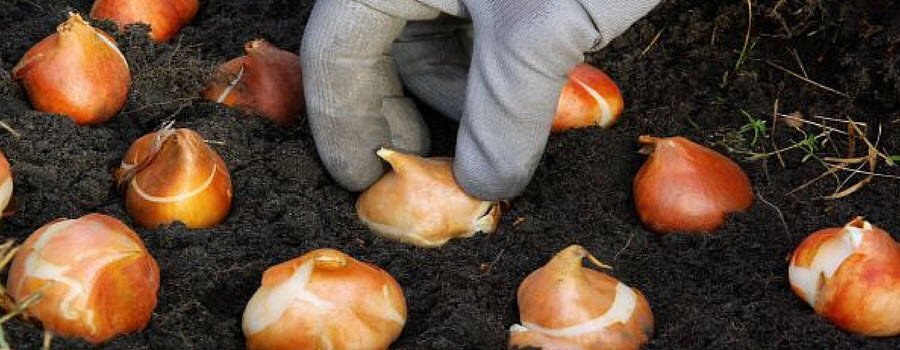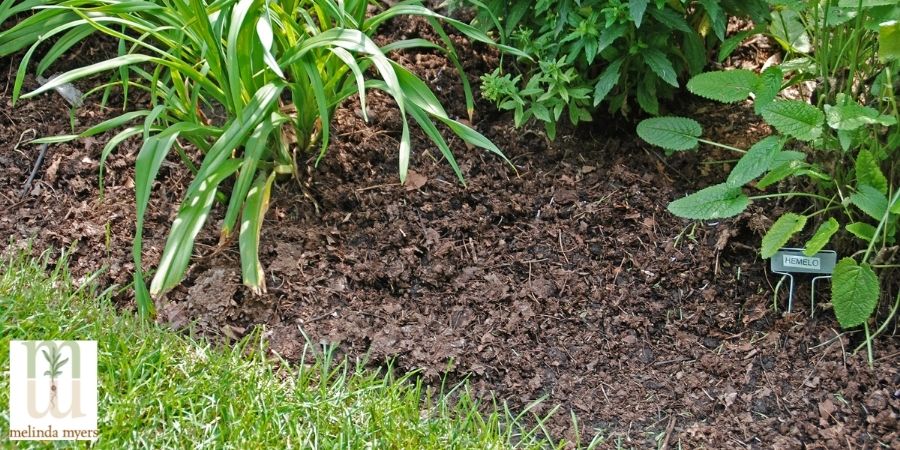Fall Lawn Care and Garden Checklist
- horticulturist and gardening expertSeptember 18, 2021
Fall color is starting to appear in the landscape while garden centers fill their benches with pansies, mums, and asters. Your fall landscaping To-Do list is beginning to fill with tasks to complete in the next month or two. Those in warm climates are switching to winter annuals, while those in colder regions are fortifying their landscapes for the cold winter ahead. No matter where you live, invest some time in preparing your landscape for the change in seasons. Dedicating some time now will pay off with a healthier more beautiful landscape next spring.
1. Plant trees, shrubs, and perennials. The soil is warm and the air is cool – perfect conditions for planting and establishing trees, shrubs, and perennials as part of your fall landscaping. Mulch the soil surrounding these plants and make sure all new plantings receive sufficient water throughout the fall and early winter.
2. Add some fall favorites like pansies, asters, and mums to containers and garden beds. Those lucky enough to garden in warm climates can also switch out summer annuals for a colorful winter annual display filled with sweet alyssum, pansies, snapdragons, calendulas, and more.
3. Reduce maintenance by joining individual trees and shrubs into larger garden beds. Fill the space with low-maintenance perennials and groundcovers or mulch to suppress weeds and conserve moisture. You’ll save time by eliminating the need to mow or hand trim around individual plants. Plus you’ll improve the growing conditions for your trees and shrubs.
4. Refresh mulch or expand mulched areas around individual trees and shrubs. The larger the mulch bed the better for these plants as grass is a major competitor of young trees and shrubs. Maintain a 2 to 3-inch layer of mulch and always pull it away from the trunk of the trees and stems of shrubs.
5. Protect trees and shrubs from hungry animals. Fencing is the best option. Enclose individual plants or small beds with animal fencing. Sink the fencing several inches into the soil to keep voles from eating trees and shrub bark over winter. The fencing should be at least 4 feet high for rabbits and 5 to 6 feet high for deer when fencing small garden beds. Taller deer fencing, closer to 8 feet, is needed to keep deer out of large areas. Or begin applying repellents before the animals start feeding for the best results. A rain and snow-resistant product will extend the time between applications saving you time and money. Check the label for application rates and timing.
6. Prevent ice and snow damage on upright arborvitae and junipers. Loosely tie the upright stems together to prevent snow and ice from piling on top of the plants causing individual stems to bend. Using bird netting will help secure the stems, is less visible, and may even reduce the risk of deer damage.
7. Plant a few bulbs this fall for a colorful early spring display. Incorporate compost, aged manure, or other organic matter into the planting space. Add a slow-release fertilizer, like Milorganite, when planting bulbs in the fall. In general, plant bulbs two to three times their vertical diameter deep. Follow specific planting and spacing directions on the package or tag.
- Select animal-resistant bulbs to avoid squirrels digging up the bulbs and deer and rabbits eating the blooms. Daffodils, hyacinths, Fritillarias, and grape hyacinths are a few to consider. Little Tommies (Crocus tommasinianus) tend to be more squirrel resistant than other crocus varieties.
- Fall planted bulbs need a chill to initiate flowering in the spring or summer. Those gardening in mild climates need low chill bulbs that will thrive and flower after a mild winter. Or purchase pre-cooled bulbs for winter planting and spring flowering.

Planting Bulbs
8. Continue to water the landscape as needed throughout the fall. Be sure to water evergreens and new plantings thoroughly before the ground freezes as part of your fall yard maintenance. Even established trees need thorough watering when rainfall is limited. Provide 10 gallons of water for every inch diameter of the tree trunk. Water the area under the tree canopy and several feet beyond for evergreens.
9. Continue to mow high as long as the grass continues to grow. Grow cool-season grasses like bluegrass, fescue, and ryegrass 2 1/2 to 31/2 inches tall. Warm-season grasses like bermudagrass, carpetgrass, centipedegrass, and zoysia should be grown at 1 to 2 inches tall while St Augustine should a bit taller, 2 to 3 inches, for best results. There’s no need to cut the lawn shorter unless that is the look you prefer.
10. Fall fertilization should be part of your fall lawn care. Fertilizing with Milorganite helps lawns recover from summer stress, encourages root growth, thickens your grass stand, and prepares the lawn for winter. MIlorganite’s low nitrogen slow release formulation won’t damage already stressed lawns. And the 85% organic matter in Milorganite feeds the soil as well as the plants.
- Those in cooler regions growing bluegrass, fescue, and perennial ryegrass should fertilize around Labor Day when temperatures cool. Then make a final application between Halloween and Thanksgiving, before the ground freezes.
- Those in warmer climates, growing centipede, Bermuda, and zoysia, should also fertilize around Labor Day. Be sure to make the last fall application at least one month prior to your average first-killing frost.
11. Aerate cool-season lawns of bluegrass, fescue, and perennial ryegrass in the fall when temperatures are more favorable and there is less risk of annual weed invasions. Wait for grass to be actively growing and complete aeration while the lawn has at least 4 more weeks of good grass growing weather. Those growing warm-weather grasses should wait until next spring or early summer to aerate.
12. Plant grass seed in early fall to fill bare spots and thicken thin northern lawns. The soil is warm and the air is cool, perfect for planting bluegrass, fescue, and perennial ryegrass. Spring through early summer is the best time to seed warm-season grasses.
13. Winterize your mower as needed and sharpen the blades. Always disengage the spark plug or remove the battery on battery-powered mowers before doing any maintenance. Clean any dirt and matted grass off the mower and follow winterizing directions in the owner’s manual. Have the blades sharpened over winter and if needed invest in a second set. This way you always have sharp blades available for a cleaner cut and more efficient mowing.

Shredded Leaf Mulch
14. Shred leaves as you mow the lawn in fall. The leaves along with the grass clippings add organic matter and nutrients to the soil. Small leaf pieces the size of a quarter will not harm the grass. Sweep all clippings, leaves, and fertilizer off walks and drives and back onto the lawn where needed and to help protect our waterways.
15. Put extra fall leaves to work in the garden. Add shredded leaves to your compost pile, spread fall leaves on top of the soil as mulch, or dig them into annual gardens as a soil amendment. Just dig a two to three-inch layer of shredded leaves into the top 12 inches of annual or new planting beds. The leaves will decompose over winter adding organic matter to the soil. By spring, your garden bed will be ready to cultivate and plant.
16. Create new beds for spring planting. Put garden trimmings and fall leaves to work creating Lasagna and Hugelklutur gardens. These soil-building methods allow you to create rich soil from garden debris. Build the beds in the fall while the raw materials are plentiful. You can plant immediately or wait until spring.

Fall Landscape
17. Continue or Begin Composting landscape trimmings into valuable compost. Composting can be as easy as putting insect- and disease-free landscape trimmings into a pile and let them decompose. Do not add perennial weeds, invasive plants, or annual weeds gone to seed unless you are actively composting. Otherwise, these survive the process and you will return them to the garden with the compost. No meat, dairy, fat, or bones should be added as these attract rodents. Speed up decomposition by layering the plant trimmings with a sprinkling of compost and Milorganite. Moisten to the consistency of a damp sponge and turn occasionally.
18. Allow disease- and insect-free perennials to stand for winter. This increases winter hardiness and your enjoyment. The dried leaves, stems, and seed heads provide beauty for you to enjoy, seeds for the birds to dine upon, and overwintering homes for many butterflies and beneficial insects.
No matter where you live or the size of your garden, get outdoors and enjoy the beauty of fall. And be sure to invest a bit of time and energy now to ensure your landscape is ready for the season ahead.

